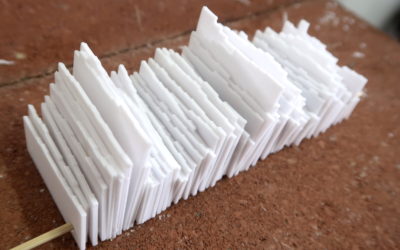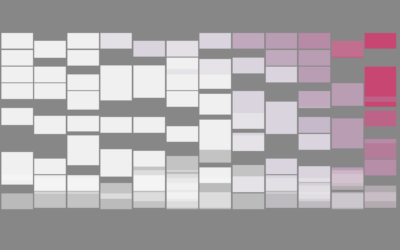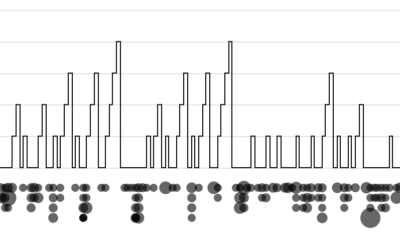This has been sitting in my drafts folder for a few months. Figured I’d just hit publish and throw it out there.
Obvious statement: there are infographics that are horribly made. Some are way too big for the information conveyed and others are useless because the creator had no idea what he was doing. Some infographics are both. Here’s the thing though. There’s plenty of suck of everything online, and yet somehow we manage to find the good resources, applications, and sources of endless entertainment.
A couple of years ago, infographics spiked and even what seems like subpar work now, passed as amusing at the least. It’s like the time on the Web when it was pure awesome to have a site decked out with animated GIFs, blinking backgrounds, and delightful MIDIs that were a treat for the ears. Sites like this still exist — some just as an archive of the past and others by someone learning HTML with a book they checked out from the library — but you’d never mistake one of those sites as an example of great Web or interaction design.
Or how about blogs? It’s as easy as ever to start one and you can write whatever you want. Some are bad and others are good. That’s how it works when people make things.
Think of infographics/visualization/etc as a medium instead of a method and it should be much easier to unruffle your feathers. There are textbooks and there are novels. There are documentaries and there are slapstick comedies.
So I don’t think a flood of low-quality infographics is going to obscure the work that is actually worth looking at. If anything, it’s going to be easier to find the standouts.
I’ve seen this through my inbox already. Readers used to send me a lot of work that well, wasn’t the best, but they thought it was interesting. That doesn’t happen so much anymore though, because I think we’ve learned what was made as commercial linkbait and what deserves our attention. Sometimes they are one and the same, which is fine by me. Even if a piece looks beginner, it’s easy to tell when a person is interested in the data or is eager to learn how to make things. I’m all for that and am more than happy to offer my two cents when someone asks me. After all, I’m still learning, too and I’ll be producing plenty of schtuff in the process.
People can (or will learn to) spot the B.S., and the bad stuff doesn’t get shared and doesn’t spread.
When the low-quality infographics stop is when we should be most concerned. It means people have lost interest. That’s not going to happen any time soon though.






Couldn’t agree more. I think of the mass of low quality infographics the same as the millions of rubbish articles out there. It’s just a medium – it’s the message that counts. And yes, the net is full of noise – but you just need to keep updating your filters. That’s how sites like yours provide a valuable service.
It’s the same in the music industry. The market is flooded with rubbish new music, because anyone can upload an mp3 (vs the old days of committing something to vinyl). So you need to find DJs you trust to act as a filter (or some other method like social media).
As somebody who does do infographics for linkbait, but is also very passionate about infographics and data visualisation. This post comes as a welcome insight into how linkbait is viewed from the other side. I’m sure not everyone feels the same, but it’s good to hear the different views.
Thanks Nathan!
I like Mark’s comment about using humans as filters. Curated content is always best.
There are subpar infographics and then there are linkbait images so poorly constructed both visually and conceptually that it’s just offensive. I think what gets most people riled up is that they see this subpar thing getting attention (traffic) and they think they could’ve done it better. And that is really just a form of laziness. Let’s make better graphics. Let’s spend our energy putting more “good” out there and quit spending time crucifying the bad.
Here here.
A simple fact about the world that’s often missing in all this is that the infographics spike was massively sharp, at a time when there was little or no clear training stream out there for highly numerate designers, so supply has struggled to keep up with demand.
Places like Flowing Data are brilliant for skills sharing – but many people want to disappear into a like-minded bubble and put up a wall between analytic-minded statisticians and creative-minded designers, when we should be learning from each other and collaborating. This is part of the problem.
Statisticians learning from designers and making more engaging graphics is easy – nothing can stop you guys spotting ideas, styles and details that you like in the wild and then finding out how to make your own versions. Designers learning from statisticians and making more meaningful graphics is harder – it requires statisticians giving constructive (not flailing) criticism and talking openly about methods.
Nathan…well put! As an infographics artist AND a songwriter, I find your comment about on how the flood of bad (insert medium here) helps the good stand out to be spot on. I’ve made my share of puffed out graphics to support 3 data points just like I’ve written some weak songs…that’s what creating things is about. It’s up to the audience to decide what the “good” is anyway. And sites/blogs like yours help infographics enthusiasts find the gems in the flood of linkbait. And it helps raise the bar for folks like me who get hired to create such linkbait (I’d imagine there’s more out there like me too). Keep up the great work!
Great shout David. I likewise don’t see the flood of bad stuff as a problem, so much as an opportunity for us to make things better. I also dabble in music production – I find the good stuff inspires me, but the bad stuff motivates me – if there was only excellent stuff out there, I’m not sure I’d even try ;)
I think there’s definitely a blurry line between quality and sub-par infographics but I do agree they provide a useful barometer for the health of the practice in general. There might be some kind of continuum towards better infographics instead of just good or bad but the hope is that people move along the continuum with every piece of data they visualize. The only reason to rejoice in the dwindling amount of terrible infographics is the increasing number of good ones.
I think the same could be said for photography especially after the advent of the digital sensor. I believe it was the NYT who reported that more photos are being taken than ever before in history and undoubtedly most of it is utter sh*te but quality always seems to trump quantity and floats to the surface.
Nicely written Nathan!
I’m constantly asked by people if the flood of infographics posted online in the past 12-24 months means the end of infographics being effective, and I always answer “No.” This feels very much like the beginning of YouTube, with a lot of horrible videos being uploaded, but the really good videos get a lot of attention and praise, even today.
As both an infographics designer and a curator, I’m constantly looking for new ways people have found to effectively share their message. I get hundreds of infographic submissions to my site, and most of them are sub-par. I can’t tell you how many of them visualize the data incorrectly, or make it harder to understand the data.
Hi, Nathan.
Just want to congratulate you for the clarity you bring to this issue. I mean, we’ve all seen the huge discussion about the “infographics going mainstream” phenomena, but it all comes to this: if it’s good, it will stand out, and it will be featureed in Randy’s Cool Infographics or here at Flowing Data, among others.
I’m just glad you’ve choosen to put it in such a simple way, without all the raging speech against the bad stuff out there, so often seen in other articles about this subject.
Cheers!
And just as the good infographics stand out, so does the rational, thoughtful, constructive voice.
You have a leader’s voice Nathan, thanks for sharing.
(and the link to this was shared with me on a LinkedIn discussion too, so goes to show that the good stuff develops legs of its own now too)
true
Great stuff David. At our company we’re always chuckling at what gets called an ‘infographic’ and posted excitedly somewhere. Seems that to many with an extremely broad definition, anything that is a .jpg that has text in it must be an infographic. While technicslly true, fancy fonts and cutesy art and logos aren’t enough. A good infographic conveys a large amount of information – so much, in fact, that I have difficulty understanding them sometimes! It’s a fine line that true infographics walk between beauty and complexity, but let’s keep insisting that those boundaries be pushed in that direction and away from clipart and text, shall we?